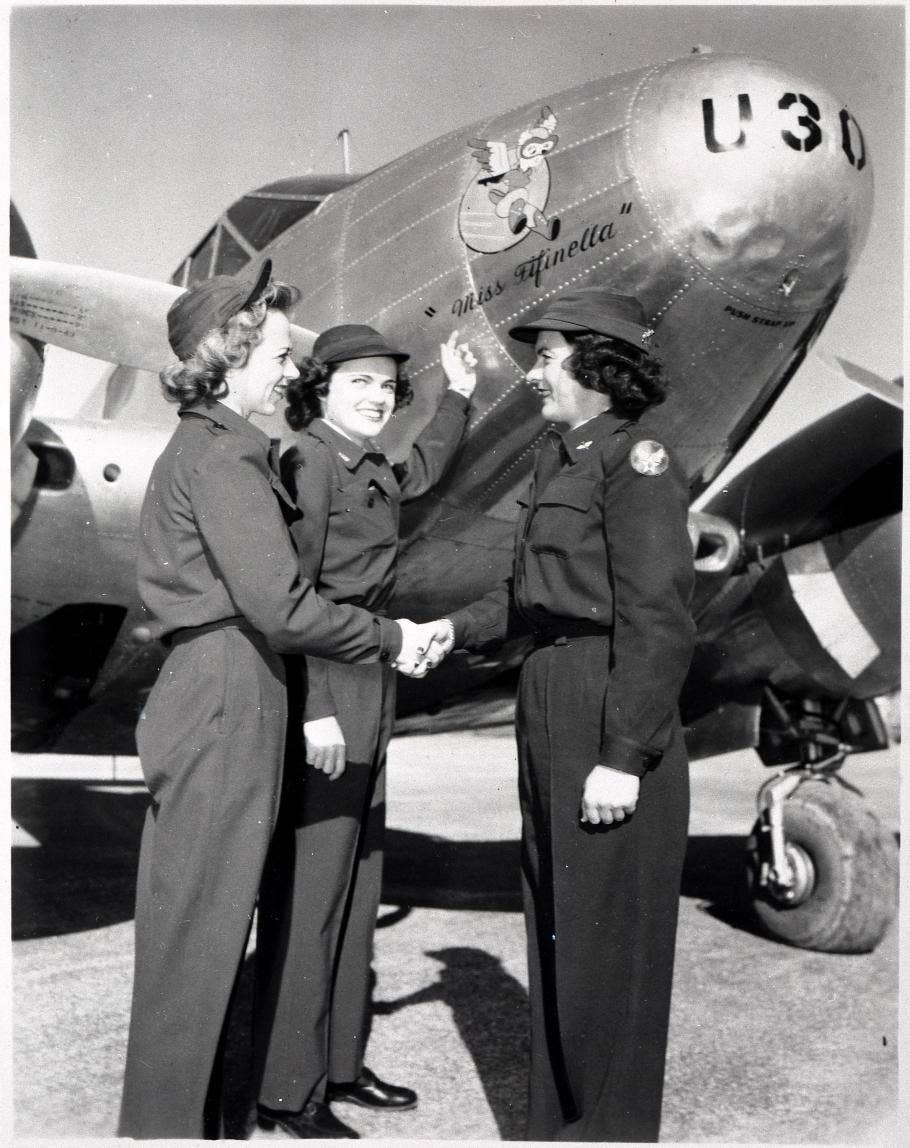
Three WASP at Avenger Field in Sweetwater, Texas. [Courtesy: Smithsonian National Air and Space Museum]
August 5 represents an important milestone for women pilots, as it was on this day in 1943 that the Women Airforce Service Pilots (WASP) were created, marking its 80th anniversary.
On Saturday, the Lone Star Flight Museum in Houston will be commemorating the event with a hangar talk on the history of the WASP at 11:30 a.m. and 1:30 p.m. CDT and display of WASP artifacts and uniforms from 10 a.m. to 1 p.m.
The WASP trained at Avenger Field in Sweetwater, Texas, some 350 miles northwest of Houston.
How the WASP Came To Be
World War II was raging and America had a shortage of military pilots. Famed aviatrix Jacqueline Cochran noted that there were a number of very experienced women pilots in the United States and suggested that if the women could take over the noncombat flying, such as target towing, flight instruction, and aircraft ferrying, more men could be deployed for defense. Cochran had the support of U.S. Army General Henry "Hap" Arnold.
Another pilot, Nancy Harkness Love, had a similar idea, and with the support of Colonel William H. Tunner of the U.S. Air Force, created the Women's Auxiliary Ferrying Squadron. The two groups were eventually merged.
To be accepted into the program, the women had to already possess a pilot certificate with a certain number of flight hours. Some 25,000 women applied for the WASP program, with 1,830 being accepted and 1,047 graduating. Because they were considered civilians and not military—despite the fact they wore uniforms and flew military airplanes—-they were denied military benefits such as assistance for burial if they were killed in the line of duty. According to WASP records, 38 died in training or during missions. If there was a body, the other WASP took up a collection to send it home. The families of the fallen WASP were not allowed to display a gold star—the symbol of a family member lost in the line of service.
When the tide of the war turned in 1944, the WASP program was disbanded. The WASP had flown more than 300,000 flight hours and piloted virtually everything in America's arsenal. Yet they were not recognized as veterans until 1977 when President Jimmy Carter signed the legislation to grant the WASPs veteran status. This gave them access to the same medical care and educational benefits and financial opportunities provided to male veterans.
In 2009, President Barack Obama awarded the WASP the Congressional Gold Medal during a special ceremony in Washington, D.C.
There are very few WASP left today, but their legacy is carried forth by following generations of women pilots who wear the Fifinella patch—the shapely gremlin mascot on their flight suits and jackets.

Sign-up for newsletters & special offers!
Get the latest FLYING stories & special offers delivered directly to your inbox






